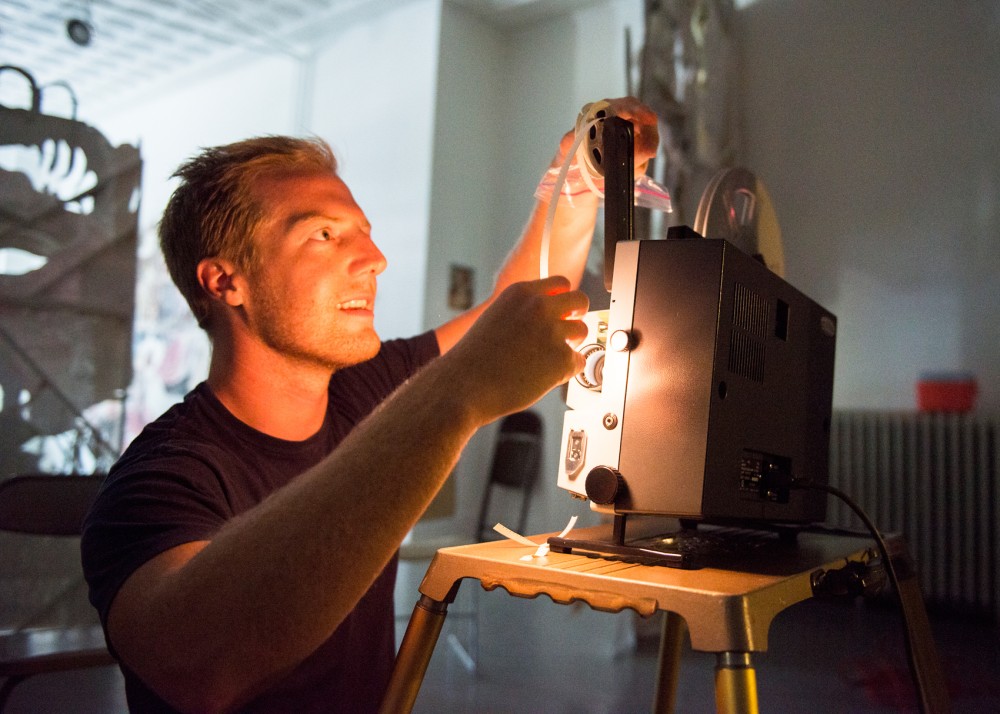Movies help capture faded memories. Much like celluloid film stock — now considered outdated by many — intimate, impactful film is a rarity.
Tonight, the Weisman Art Museum will feature an event entitled, “Movies at WAM.” This event will focus on how film and art interact with time and memory.
The first half of the night will feature home movies brought in by community members. Movies of five minutes or less — on any film-based medium, including VHS, 8mm and 16mm film — will be screened.
The second half of the night will center on local filmmakers and the projects they have been working on.
“Most of the artists work with various prints of film,” project curator Sam
Hoolihan said. “So we are looking to show a form of art that is geared towards the artist.”
This event features movies printed on film stock. Now that digital is the main medium for visual storytelling, film has gone the way of the gramophone and the Walkman.
“[Film] is a lot more fun to work with,” Hoolihan said. “There are a lot more challenges and limitations imposed, which I think gets people really excited about working through it.”
Hoolihan, an adjunct professor at Minneapolis College of Art and Design and the University of Minnesota, is a filmmaker himself. For him, teaching has been fruitful in many unexpected ways.
“I really enjoy teaching,” Hoolihan said. “But I also feel like it’s an opportunity to continue learning. I find I just really value getting to meet new, young artists.”
One young artist who will be showing her work is Kelsey Bosch. Bosch’s work, “Countdown,” concerns a trip to Iceland she took last fall.
“It cycles through three shots, and as they cycle, they become faster,” Bosch said. “I was thinking about human versus geological time and how we are starting to see them converge.”
Bosch, like many of the filmmakers, works in both digital and film mediums. But for this project, she felt film fit better.
“The graininess of the Super 8 lends itself to distance spectatorship,” Bosch said. “When I was filming the glacier, I was on a glacier hike tour. I made the group stop for four minutes. I could feel tension building because the rest of the group wanted to move on and see more. More of what? They were consuming their experience so rapidly and without depth.”
How artists interact with time is a large part of what this event is about. For Bosch, this is a theme in which she is well-versed.
“I see my work’s importance in its resistance to the speed at which culture operates,” Bosch said. “I see it as a reprieve from this exhaustion — a demand for time and reflection.”
The way in which modern culture and time collide is also paramount to understanding film’s place in the artist’s toolbox.
“You can trace an artist’s choice of medium to commercial availability,” Hoolihan said. “Usually, once there is a commercial technological advancement in a form, artists adopt the older, less-used, cheaper form. Financial constraints aside, artists are always trying to capture the warmth of time or timelessness.”
Along with stressing the underutilized medium of film, the exhibition is meant to introduce the community to filmmakers they might not know about.
“There are a lot of really wonderful local artists,” Hoolihan said. “Some may work in a more experimental way, but people will be able to take away tips on how to develop a craft-based process.”
While the event is geared toward the educational understanding of art, its primary purpose — a reflection on nostalgia and a desire to unearth hidden treasures — is a bonus.
“It’s going to be very cool,” Hoolihan said. “These movies are like old little time capsules. Sometimes families have only seen them once. They can reveal surprises. Secrets.”








